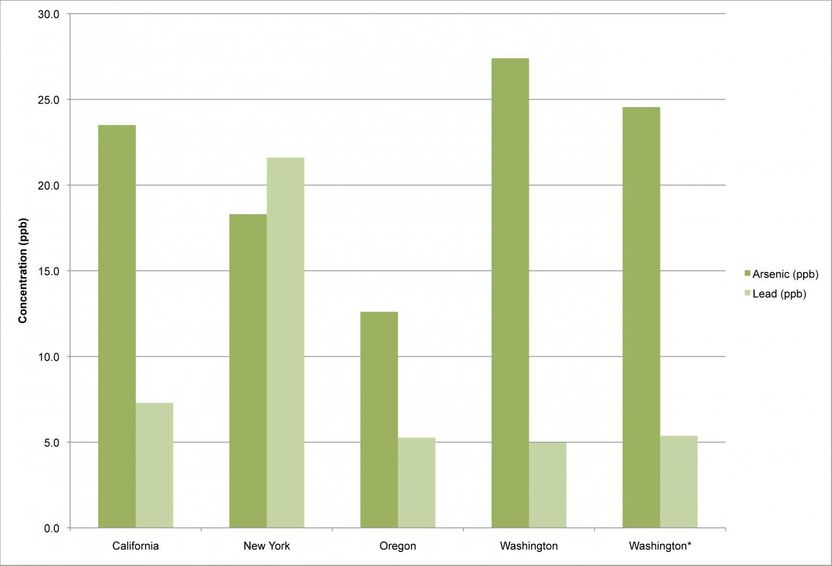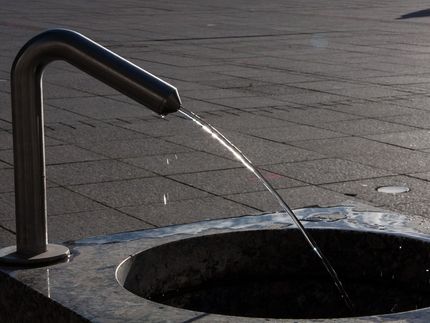Arsenic found in many US red wines
Health risks depend on total diet
A new study that tested 65 wines from America's top four wine-producing states found all but one have arsenic levels that exceed what's allowed in drinking water. The U.S. Environmental Protection Agency allows drinking water to contain no more than 10 parts per billion of arsenic. The wine samples ranged from 10 to 76 parts per billion, with an average of 24 parts per billion.

All but one of 65 tested wines exceeded the 10 parts per billion EPA drinking water standard for arsenic, and some New York wines exceeded the 15 parts per billion drinking water standard for lead.
Posted with permission from the Journal of Environmental Health, a publication of the National Environmental Health Association, www.neha.org.
But a companion study concluded that the likely health risks from that naturally-occurring toxic element depend on how many other foods and beverages known to be high in arsenic, such as apple juice, rice, or cereal bars, an individual person eats. The highest risks from arsenic exposure stem from certain types of infant formulas, the study estimated.
"Unless you are a heavy drinker consuming wine with really high concentrations of arsenic, of which there are only a few, there's little health threat if that's the only source of arsenic in your diet," said Denise Wilson an UW electrical engineering professor. "But consumers need to look at their diets as a whole. If you are eating a lot of contaminated rice, organic brown rice syrup, seafood, wine, apple juice - all those heavy contributors to arsenic poisoning - you should be concerned, especially pregnant women, kids and the elderly."
The UW study is the first peer-reviewed research in decades to look at the arsenic content of American wines. As a group, they had higher arsenic levels than their European counterparts, likely due to the underlying geology of U.S. wine growing regions.
The study looked at red wines, except from two areas in Washington where only white wines were produced, because they are made with the skin of grapes where arsenic that is absorbed from soil tends to concentrate.
Wilson also tested for lead, which is a common co-contaminant. The study found lead in 58 percent of the samples, but only 5 percent exceeded drinking water standards.
Washington wines had the highest arsenic concentrations, averaging 28 parts per billion, while Oregon's had the lowest, averaging 13 parts per billion.
"There were no statistical differences among Washington, New York and California," she said. "The only star in the story is Oregon, where arsenic concentrations were particularly low."
Because the average adult drinks far more water (between 1.7 and 3.2 cups per day) than even core or frequent wine drinkers, it's an imperfect comparison to gauge health risks based on the EPA drinking water standard of 10 parts per billion. That's why Wilson also evaluated how much arsenic individuals can safely consume from all the sources in their diet.
In a companion study, she compiled consumption data for foods that have been shown to contain arsenic -- juice, milk, bottled water, wine, cereal bars, infant formula, rice, salmon and tuna.
From that, she was able to determine how much of an arsenic "dose" an average child or adult would get from each food source and how close it would come to risk thresholds set by the U.S. Agency for Toxic Substances and Disease Registry for total arsenic consumption across a person's diet.
But rather than litigate against vineyards she would encourage consumers to evaluate their diets more holistically and speak with a doctor if they have concerns. Tests are available that can detect high arsenic levels and tend to capture arsenic exposure over longer histories than other toxic chemicals.
"The whole idea that you would sue a winery for having arsenic in their wine is like suing someone for having rocks in their yard," Wilson said. "My goal is to get people away from asking the question 'who do we blame?' and instead offer consumers a better understanding of what they're ingesting and how they can minimize health risks that emerge from their diets."
Original publication
Densie Wilson; "Arsenic Content in American Wine"; Journal of Environmental Health; 2015






























































